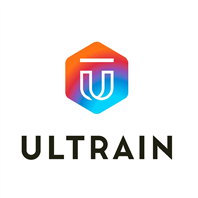NEW YORK, NY / ACCESSWIRE / September 13, 2018 / The concept of Blockchain is on its way to becoming a topic for conversation in every household. However, why there aren't already real large-scale commercial Blockchain applications in place? Unfortunately, although Blockchain technology can create a completely new and disruptive business model, the underlying technological performance of the Blockchain public chain is not enough to support large-scale commercial applications. This is due to the technical bottlenecks which arise from inadequate system performance. Ethereum provides a good example. For all applications running on the whole network, the processing capacity can only reach around 20-25 pens/second, and for an application that supports daily commercial operations, the minimum TPS peak requirement needs to reach around 2000-3000. The existing Blockchain 1.0 and Blockchain 2.0 systems, based on their performance statistics published by Bitcoin and Ethereum, are therefore unable to support large-scale commercial applications.
It is better to further improve the performance of the Blockchain system without sacrificing decentralization and security. It is impossible to break through the Blockchain, which will inevitably require major innovations and breakthroughs in technology. This type of project is called the Blockchain 3.0 project.
As we try to break through the Blockchain impossible triangle, Ultrain also is making its own contribution with its proposal of a new R-POS consensus. Let's use a metaphor as an example. Similar to the DPOS consensus mechanism adopted by EOS, a large number of people vote for a fixed number of groups to make decisions based on the number of tokens held by the group. The R-POS mechanism randomly selects a few people and makes its own proposals among a group of people. It then randomly selects 10 times more people to verify whether the previous proposal is correct. Ultimately, the proposal will be correct. The correct proposals are then integrated to form the final decision.
Therefore, the core idea of R-POS is to change the selection method of participating in the consensus node from the entrusted election to a random selection process on the basis of DPOS. This ensures that everyone on the entire network has an equal chance to be elected to participate in each round. Consensus nodes not only protect the decentralization of the network, but also greatly improve performance. At the same time, Ultrain guarantees R-POS by introducing parallel technology, fragmentation technology, device fingerprint technology and multiple cryptography improvements. In terms of further improvements in security and performance, the following is a brief introduction to the R-POS consensus process:
Each Round of R-POS consensus mechanism can be separated into four different stages. Each round of consensus confirmation takes 10 seconds:
The first stage is the role confirmation stage. Here, nodes are randomly elected from the entire Ultrain network. and each node's role is determined in the current round of consensus by applying the VRF function. In each round of consensus, the roles of nodes are divided into three types:
- Block formation node: responsible for assembling the potential block in the current round; ach node will be selected as the formation node in each round;
- Voting node: responsible for the next stage of voting to confirm the identity of the formation node of this round;
- Data recording node: does not participate in block formation, and provides data recording service after the block is determined;
The probability of any single node to be selected as a block formation node or a voting node depends on the input parameters of the VRF. These parameters are the number of Tokens held by the node, the performance of the devices (node) and the credibility of the node. The higher these three parameters are, the higher the probability of selection. Device credibility; for each node a hardware fingerprint will be generated that cannot be tampered with., The credibility of the node and each device is based on this hardware fingerprint. Nodes that consistently show good behavior are more likely to be selected.
In short, Ultrain first increases the difficulty of external and internal attacks by randomly selecting nodes. Secondly, based on the credibility of device fingerprints, it establishes a model for the credibility of a single node, which makes attacks more difficult to execute. The device needs to accumulate its credibility score to increase the probability of being selected, and this takes time. This is similar to the notion of using time consumption as a replacement for computing power consumed by hash mining, while the system provides better Security; Finally, based on the token-locking mechanism, the cost of malicious attack increases, therefore improving the overall security of the Ultrain network in many ways.
In the second stage and the parallel consensus stage, the selected formation nodes respectively assemble the candidate blocks of the current round in parallel. Then, the voting node reaches a consensus on the formation nodes to determine if the block is received by most of the nodes; Here, Ultrain has changed from the original one formation node to multiple block formation nodes to work in parallel, which greatly improves the system's TPS. For "multiple block formation to work at the same time", even if a block node is attacked, as long as one node reaches a consensus, it can ensure that the system does not generate an empty block, thereby improving the activity of the system, and achieving the core of the target. The technical challenge lies within the parallel BA algorithm, and thus may cause a large number of "network storms". To solve this problem, Ultrain introduces redundant coding technology to divide the message into multiple transmissions, ensuring that the largest message is broadcast with limited network bandwidth. Quantity optimizes network throughput. Ultrain also introduces threshold encryption technology to allow candidate blocks to be delivered in small chunks during delivery. That is, each node is guaranteed to be unable to receive enough messages, know the content of the messages, avoid the tendency to pass consensus messages, and improve fairness;
The third stage is the parallel BA stage: Once again randomly selected voting nodes will agree on the candidate blocks in the parallel consensus stage, ensure that everyone accepts the same block combination, and the consensus block combination consensus cost block consensus will eventually form blocks.
The fourth stage is broadcasting the blocks identified during this round to the whole network, completing the current round of consensus;
We illustrated the operation of the consensus in the case of "single-slicing". In order to improve the efficiency of the consensus, Ultrain also introduces fragmentation technology. Ultrain's sharding technology considers both data and data storage sharding. The core idea is that when processing across shards, the data needs to be stored across them redundantly. That is, by space for time. This results in overall improvement of consensus efficiency.
In general, the core technology of the Ultrain Consensus is VRF+BFT. The introduction of parallel technology and fragmentation technology greatly improves the performance of the system, expands the security of the system through device credibility, and achieves the maintenance level of POW. In addition, Ultrain has released the concept network of R-POS in early July, and we deployed the Ultrain system to 1000 nodes on the public Amazon cloud. After actual testing, the network can reach an average of 3000 TPS with a confirmation time of 10 seconds. Its performance far exceeds the existing Blockchain 3.0 project. In addition, it is expected that the sharding technology will be deployed simultaneously after the publication of Ultrain’s network in April of next year. At that time, the TPS of the network can be improved by a factor of several dozen times.
The landing of the Blockchain 3.0 project is the only way for blockchain to empower the real economy. It is hoped that all the public chain teams around the world can develop rapidly and solve the core issue, that the existing blockchain public chain cannot support large-scale commercial applications. Let blockchain technology help the real economy to establish a new business model and substantially improve social productivity.
Website: http://ultrain.io
Telegram Group: https://t.me/ultrainchain
Media Contact: [email protected]
SOURCE: Ultrain





